Occupational safety training for roller skate manufacturing.
99,000 ₫
Note: The above price is calculated per person and may vary depending on the number of participants in the course and market fluctuations. For more accurate pricing information, please refer to the pricing table or contact our consulting staff directly.
Occupational safety is an important issue in roller skate manufacturing factories and must be addressed promptly to ensure the health and safety of workers, as well as to enhance the reputation of businesses. The Occupational Safety Training course is one of the effective solutions to raise awareness on how to prevent workplace accidents for workers involved in roller skate production.
Table of Contents
Toggle1. Overview of Roller Skates
a. What are Roller Skates?
Roller skates, also known as roller skates, are shoes designed to glide on hard surfaces, usually roads or floors. Roller skates have a special structure that helps users move easily and perform skating maneuvers.
Structure of roller skates:
- Chassis: The bottom part of the shoe where the wheels are attached. The chassis can be made of metal or durable plastic.
- Wheels: Roller skates can have 4 or 8 wheels. Wheels are usually made of polyurethane to ensure grip and smooth movement.
- Wheels can be arranged in parallel (quad skates) or in-line (inline skates):
- Parallel roller skates (Quad skates): Have 2 rows of wheels, each with 2 wheels, providing more stability and easier control, commonly used in activities like roller derby and dancing.
- In-line roller skates (Inline skates): Have 3, 4, 5, or 6 wheels aligned in a single row, allowing higher speed and better control in sports or fast movement.
- Boot material and structure: This part surrounds the foot and ankle. It is usually made of leather or synthetic materials for comfort and support.
- Truck/Frame: Connects the wheels to the boot and is responsible for stability and tilt adjustment.
- Lacing/Straps system: Keeps the foot securely in the skate to enhance stability and control.
Benefits of using roller skates:
- Exercise: Skating is a good form of physical activity that improves cardiovascular health and fitness.
- Entertainment: It is a fun and enjoyable activity suitable for all ages.
- Efficient transportation: Roller skates can be a fast and efficient way to get around in cities or urban areas.

b. Machinery used in roller skate production
1. Leather Cutting and Processing Machines
- Leather cutting machines: Used to cut leather or synthetic materials into main parts of the skate boot. These machines can be automatic or manual cutters.
- Leather processing machines: Include staplers, sewing machines, pressing machines, and stamping machines. These help shape and process boot details.
2. Thermoforming Machines
- Thermoforming machines: Used to shape and mold shoe parts, especially padding and structural support components. This process helps the boot fit the foot comfortably.
3. Chassis Manufacturing Machines
- Metal or plastic cutting machines: Used to cut chassis from metal or plastic sheets. These can be laser cutters or CNC machines.
- Welding and joining machines: Used to weld and join chassis parts, ensuring durability and strength.
4. Wheel Assembly Machines
- Wheel assembly machines: Used to assemble wheels onto the chassis. These machines check and ensure wheels are securely attached and function smoothly.
5. Fastening and Accessory Machines
- Stapling machines: Used to attach accessories like buckles, hooks, and laces to the boot.
- Nail attaching machines: Used to attach rivets and screws to the chassis or boot parts.
6. Quality Control Machines
- Durability testing machines: Used to test the strength of skates, including load-bearing, grip, and wear resistance tests.
- Comfort testing machines: Evaluate the comfort and fit of the skate, including pressure and sensation tests while wearing.
7. Painting and Finishing Machines
- Painting machines: Used to paint and finish the skate surface, including protective and decorative coatings.
- Polishing machines: Used to polish the skate surface, providing gloss and final finishing.
8. Packaging Machines
- Automatic packaging machines: Pack skates into boxes or bags for distribution, ensuring fast and accurate packaging processes.

c. Famous roller skate brands
1. Riedell Skates
- Highlights: Riedell is one of the oldest and most reputable brands in roller skates, known for high-quality and customizable products. They produce both quad and inline skates.
- Popular products: Riedell 595, Riedell 122, Riedell 265.
2. Rollerblade
- Highlights: Rollerblade is a pioneer brand in inline skates, known for advanced technology and high-performance designs.
- Popular products: Rollerblade Macroblade, Rollerblade Twister, Rollerblade Powerslide.
3. Impala Rollerskates
- Highlights: Impala is famous for stylish and colorful quad skates, targeting entertainment and fashion markets.
- Popular products: Impala Rollerskates Classic, Impala Rollerskates High-Top.
4. Antik Skates
- Highlights: Antik is notable in the quad skate field, especially popular within the roller derby community, known for high-quality and customizable products.
- Popular products: Antik AR1, Antik AR2, Antik Skates Zen.
5. Bont Skates
- Highlights: Bont stands out in inline skates with advanced technology and premium materials for improved performance and comfort.
- Popular products: Bont Jet, Bont Vaypor, Bont Prostar.
6. Sure-Grip
- Highlights: Sure-Grip is a well-known quad skate brand, offering high-quality and flexible products for beginners and professionals alike.
- Popular products: Sure-Grip Rebel, Sure-Grip Carrera, Sure-Grip Boardwalk.
7. Chaya Skates
- Highlights: Chaya focuses on creative and modern quad skates, catering to both novices and experienced skaters.
- Popular products: Chaya Cherry Bomb, Chaya Skate.
8. Powerslide
- Highlights: Powerslide specializes in inline skates, offering high-quality products suitable for sports and recreational use.
- Popular products: Powerslide Next, Powerslide Hardcore, Powerslide Swell.
d. Specific jobs in a roller skate manufacturing factory
Group 1
- CEO, Deputy CEO, and department heads in the roller skate manufacturing factory.
Group 2
- Safety officers: manage safety in the factory, design safety procedures, supervise and enforce safe working practices among employees.
Group 3
- Material Cutter: Operate machinery to cut materials to required sizes and shapes for skate parts.
- Assembly Worker: Assemble boot parts including sewing, gluing, and connecting components.
- Machine Operator: Operate machines such as sewing machines, thermoforming machines, and staplers to process boot parts.
- Chassis Fabrication Worker: Fabricate chassis from metal or plastic sheets, including cutting, welding, and joining parts.
- Chassis Assembly Engineer: Assemble and inspect chassis to ensure strength and durability.
- Wheel Production Worker: Produce wheels including molding, processing, and quality inspection.
- Wheel Assembly Worker: Assemble wheels onto chassis and check smooth operation.
- Finishing Worker: Finish skate surfaces including painting, polishing, and attaching accessories like buckles and laces.
- Quality Control Inspector: Inspect each skate to ensure product meets quality and functional standards.
- Packaging Worker: Pack roller skates into boxes or bags preparing for distribution.
Group 4
- Office work, services, sales, and marketing.
- Production management, quality management, human resources management, material management, financial and accounting management.
- Research and development of new products, design of product packaging and samples.
2. Overview of Occupational Safety Training Course for Roller Skate Production
Within this article, we focus on issues related to Group 3 because Group 3 is the group directly involved in the production process and faces the highest occupational safety risks. For more information on other groups, see here.
a. What is Group 3 Occupational Safety Training?
- Group 3 Occupational Safety Training consists of sessions that equip workers with awareness on how to prevent occupational accidents.
- The safety training course helps workers identify and avoid hazards, minimizing the risks of occupational accidents while working.
REGISTER FOR OCCUPATIONAL SAFETY TRAINING SERVICE
b. Training Duration
Initial safety training duration
- Total training time is at least 24 hours, including examination time.
- 8 hours of theory on policies and laws regarding occupational safety and hygiene
- 8 hours of theory on basic knowledge of occupational safety and hygiene
- 4 hours of theory on specialized training content
- 2 hours of practical training on specialized content
- 2 hours of theoretical examination at the end of the course
The safety training center will divide the time into several sessions depending on the work schedule of the employees. Usually, there will be 6 training sessions, and the course will take place over 3 days, provided the manufacturing enterprise arranges continuous study time.
Periodic safety training duration
- Before the occupational safety card expires, workers who want to renew it must undergo periodic occupational safety training, with the periodic training time being at least 50% of the initial training duration.
Explanation: The total time for periodic occupational safety training is at least 12 hours, including examination time. After completing the periodic training course and passing the test, workers will be reissued or have their occupational safety card extended.
c. Course Content
| No. | TRAINING CONTENT | TRAINING DURATION (HOURS) | |||
| Total | Including | ||||
| Theory | Practice | Examination | |||
| I | System of policies and laws on occupational safety and hygiene | 8 | 8 | 0 | 0 |
| 1 | Overview of the system of legal documents on occupational safety and hygiene. | 6 | 6 | ||
| 2 | System of standards and technical regulations on occupational safety and hygiene. | 1 | 1 | ||
| 3 | Specific regulations of state management agencies on occupational safety and hygiene when building new, expanding, or renovating facilities for production, use, storage, preservation, and inspection of machinery, equipment, materials, and substances requiring strict occupational safety and hygiene standards. | 1 | 1 | ||
| II | Basic knowledge of occupational safety and hygiene | 8 | 8 | 0 | 0 |
| 1 | Basic knowledge of hazardous and harmful factors in the workplace. | 4 | 4 | ||
| 2 | Methods to improve working conditions. | 1 | 1 | ||
| 3 | Safety culture in production and business. | 1 | 1 | ||
| 4 | Rights and obligations of employers and workers; policies and regimes on occupational safety and hygiene for workers; functions and duties of safety and hygiene networks. | 1 | 1 | ||
| 5 | Safety and hygiene regulations, signs, safety and hygiene guidance signs, use of safety equipment, personal protective equipment; skills and procedures for first aid in occupational accidents, prevention of occupational diseases. | 1 | 1 | ||
| III | Specialized training content | 6 | 4 | 2 | 0 |
| Comprehensive knowledge about types of machinery, equipment, substances causing hazardous and harmful factors; risk analysis, evaluation, and management in occupational safety and hygiene; safe working procedures with machinery, equipment, and substances requiring strict occupational safety and hygiene. | 6 | 4 | 2 | ||
| IV | Final occupational safety training examination | 2 | 2 | 0 | 0 |
| Total | 24 | 22 | 2 | ||
See more training contents of the 6 groups
d. Occupational Safety Card
After completing the occupational safety training course and passing the test, workers will be issued a occupational safety card (commonly called a Group 3 occupational safety certificate).
The Group 3 safety card clearly displays information such as: full name, date of birth, job title, and specific working environment. It also includes the training period, a red stamp, and a signature confirming the completion of the training course.
According to the regulations on issuing safety cards as specified in Clause 2 of Article 24 of Decree 44/2016/ND-CP, there are two cases:
- In the case where the employer and the employee have a labor contract, the employer must sign, stamp, and endorse the safety card for the Group 3 trained employee after the employee has completed the training course at the occupational safety training unit and passed the test.
- In the case of freelance or seasonal workers without a labor contract, the training unit must sign, stamp, and endorse the safety card for the worker after they have completed the training course at the occupational safety training unit and passed the test.

3. Identifying Hazards Affecting Workers in Roller Skate Production
Hazards from Machinery and Equipment
- Machine-Related Injuries: Machines such as cutting machines, sewing machines, heat pressing machines, and processing equipment can cause injuries if not operated or maintained properly. Common injuries include cuts, punctures, and fractures.
- Accidents from Malfunctioning Equipment: Faulty or poorly maintained machinery can cause serious accidents. For example, a jammed cutting machine can eject debris, posing a danger to workers.
- Entanglement: Clothing or hair can get caught in rotating parts of machines, leading to severe injuries.
Chemical Hazards
- Exposure to Toxic Chemicals: Manufacturing processes like painting, gluing, and leather treatment may use hazardous chemicals such as solvents, adhesives, and cleaning agents. Prolonged exposure can cause health issues like skin irritation, respiratory diseases, or organ damage.
- Smoke and Dust: Processing and cutting operations may generate smoke and dust, causing respiratory problems if ventilation is inadequate.
Environmental Hazards
- Noise: Machinery and equipment in the factory can produce loud noise, potentially causing hearing damage if ear protection is not used.
- Extreme Temperatures: Some production processes like heat pressing generate high temperatures. Conversely, storing materials may require low temperature conditions.
Mechanical Hazards
- Musculoskeletal Strain: Tasks such as handling heavy materials, prolonged standing, and repetitive motions can cause musculoskeletal problems.
- Slips, Trips, and Falls: Floors can be slippery due to oil or water, increasing the risk of falls and injuries.
Hazards from Use of Protective Equipment
- Improper Use of Protective Equipment: Lack of or incorrect use of protective gear like gloves, safety glasses, and helmets can increase injury risks.
Hazards Due to Working Conditions
- Poor Lighting: Insufficient lighting can reduce visibility and increase accident risks.
- Crowded Workspaces: Limited working space may cause collisions and accidents during movement.

4. Safety Measures for Roller Skate Production
Training and Education
- Occupational Safety Training: All workers should receive formal training on safety rules, proper machine and equipment use, and hazard identification within the factory.
- Production Process Training: Provide detailed guidance on production processes, from machine operation to material handling and final product processing.
Use of Personal Protective Equipment (PPE)
- Protective Gloves: Wear gloves when handling sharp materials or machinery that may cause injury.
- Safety Glasses: Use safety glasses to protect eyes from dust, debris, and chemicals.
- Helmets: Wear helmets in areas where there is a risk of impact or collision.
- Hearing Protection: Use ear protection to guard against loud noise in noisy environments.
- Safety Shoes: Wear steel-toed or puncture-resistant safety shoes to protect feet from heavy or sharp objects.
Safe Operation of Machinery and Equipment
- Equipment Inspection: Conduct regular inspections and maintenance to ensure safe and efficient machine operation.
- Proper Machine Use: Follow operating instructions and avoid unauthorized actions.
- Warning Signs: Place warning signs or barriers around hazardous areas and operating machines.
Chemical Management and Handling
- Safe Chemical Storage: Ensure chemicals are stored properly with clear labeling, following hazardous chemical regulations.
- Ventilation Systems: Maintain good ventilation in work areas to reduce exposure to fumes and chemical vapors.
- Chemical Handling Training: Train workers on proper handling and emergency response related to chemicals.
Creating a Safe Work Environment
- Maintain Clean Floors: Keep floors free from oil, water, or obstacles to reduce slip hazards.
- Organize Workspaces Properly: Arrange work areas for easy movement and to avoid collisions.
- Provide Adequate Lighting: Ensure work areas are well-lit for clear visibility.
- Regularly conduct occupational environment monitoring in factories to collect and analyze harmful factors affecting workers, then adjust and reduce hazards to prevent occupational diseases.
Accident Prevention and Emergency Response
- Emergency Response Plans: Prepare plans for emergencies such as fire, chemical spills, or workplace accidents.
- First Aid Training: Ensure workers know basic first aid and have access to first aid kits for emergencies.
- Accident Reporting: Maintain procedures for timely reporting and handling of accidents to prevent future incidents.
Safe Practices in Production Processes
- Quality Control: Implement quality control measures to detect and correct defects early.
- Process Adjustments: Evaluate and modify production processes to minimize hazards and improve safety.
Review and Update Safety Regulations
- Review and Update: Regularly review and update occupational safety regulations to ensure compliance with current standards and laws.
5. Benefits of Occupational Safety Training for Roller Skate Production
An Toan Nam Viet offers your company the following excellent benefits upon completing occupational safety training courses in accordance with Decree 44/2016/ND-CP on Occupational Safety and Hygiene for companies, factories, and enterprises.
- Workers can identify potential risks of workplace accidents and take preventive measures to avoid accidents.
- Your enterprise can establish risk prevention measures in production, operation, and maintenance processes.
- Reduce costs associated with safety incidents in the workplace.
- Uninterrupted production helps increase labor productivity and product quality.
- Comply with labor safety laws, avoiding legal risks.
- Create reputation and professionalism in all aspects, enhancing your company’s brand image.
Nam Viet’s training courses are solutions to prevent external risk factors from affecting individuals, helping them avoid dangers that could lead to injury or worse, death.
REGISTER FOR OCCUPATIONAL SAFETY TRAINING SERVICE
6. Customer Feedback After Completing Roller Skate Production Safety Training
An Toan Nam Viet has many years of experience accompanying numerous businesses across Vietnam, especially in the southern provinces. This responsibility is very precious to us, so our Occupational Safety Training services are increasingly professional. The motivation for Nam Viet’s growth comes from positive feedback and suggestions from our clients. Below are some testimonials from partners we have served.
Bac Nam E&C Investment and Construction Joint Stock Company
“Using An Toan Nam Viet’s service for the first time, I was surprised by the 24/7 enthusiastic support from the consulting team. The class organization was very quick and convenient for our company, thank you very much!”
Hoa Dat Construction and Trading Joint Stock Company
“Nam Viet’s service helped us greatly in simplifying occupational safety and completing safety documentation for work processes. The consulting team was enthusiastic and timely in addressing our questions. 5 stars for Nam Viet.”
See more customer interviews after using An Toan Nam Viet’s services
7. An Toan Nam Viet’s Occupational Safety Training Capability
An Toan Nam Viet is a reputable and high-quality occupational safety training center in Vietnam today. Our training sessions take place continuously at production workshops, factories, or construction sites across the country (all 63 provinces).
REGISTER FOR OCCUPATIONAL SAFETY TRAINING SERVICE
Occupational Safety Training License
- An Toan Nam Viet has been inspected and certified by the Safety Department of the Ministry of Labor – Invalids and Social Affairs as meeting the conditions for conducting occupational safety and hygiene training. This further strengthens our training capacity.

Materials and Lectures
- Before use in training courses, safety training materials have been reviewed and approved to ensure accuracy and effectiveness.
- Our instructors follow a standardized teaching method developed by An Toan Nam Viet experts, which is designed to maximize knowledge absorption.
Facilities
- Controlling environmental factors in classrooms improves teaching efficiency and learners’ knowledge absorption.
- Our training facilities include spacious classrooms meeting standards for area, lighting, and training equipment.
8. Nationwide Reputable and Quality Safety Training Center
At An Toan Nam Viet, we prioritize the professional dedication to occupational safety training. For us, imparting knowledge to workers so they can protect themselves safely on their livelihood journey contributes to nation-building.
To ensure effective training, we prepare meticulously, from teaching tools and equipment to curricula, materials, sound, and lighting.
Our occupational safety trainers are experts with many years of experience. Some have conducted research identifying hazards in various industries and prevention methods.
Lectures are based on real practice and delivered vividly and clearly to workers. This helps learners feel comfortable and absorb knowledge well. The knowledge always complies with Decree 44/2016/ND-CP.
Workers thus learn many prevention measures and how to protect themselves, applying these suitably in their work.
Our training center proudly provides professional and reputable occupational safety training services with the following advantages:
- Competitive training costs while ensuring training quality.
- Flexible training schedules aligned with company production situations.
- Quick and lawful certification procedures.
- Experienced and long-term instructors.
- Classrooms controlled for factors affecting training quality to enhance teaching and learning efficiency.
- Lessons tailored to occupational safety in enterprises.
- An Toan Nam Viet works dedicatedly and professionally to support customers promptly and accurately.

9. Additional References for Roller Skate Production Safety Training Materials
- Roller Skate Production Safety Materials
- Occupational Safety Training Materials Set
- Occupational Safety Training Test Set
- Roller Skate Production Safety Training Curriculum
- Roller Skate Production Safety Multiple Choice Test
No comments yet

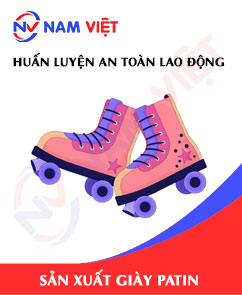
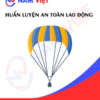
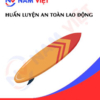



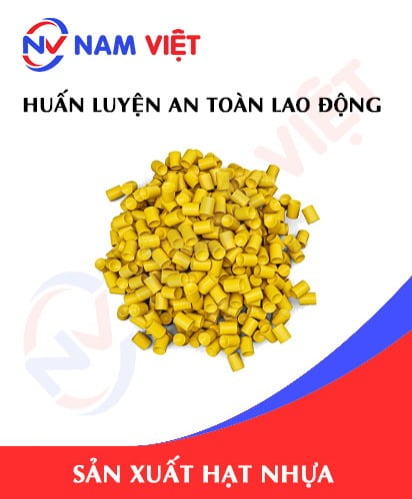
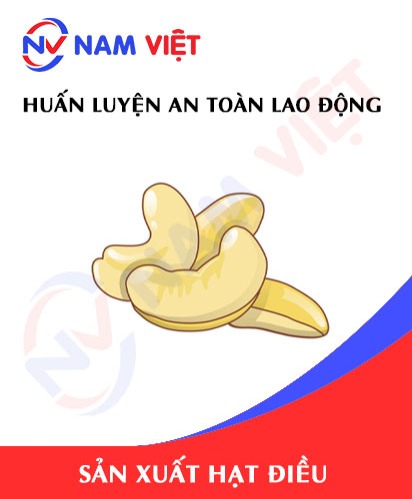
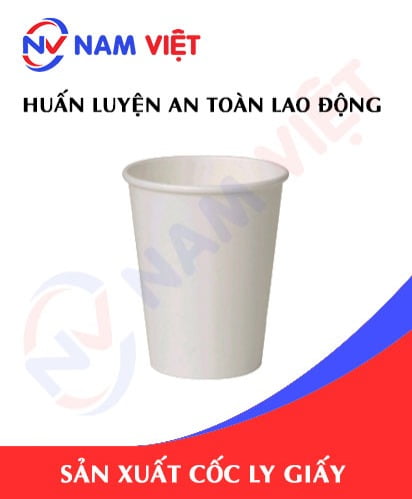
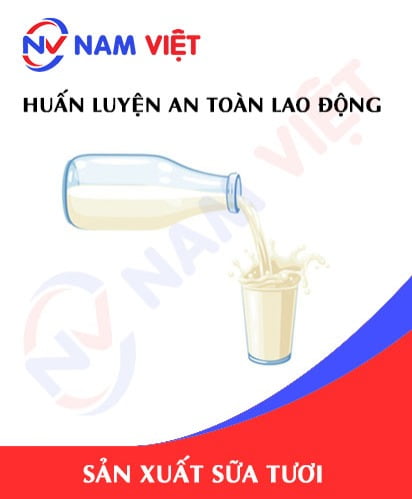
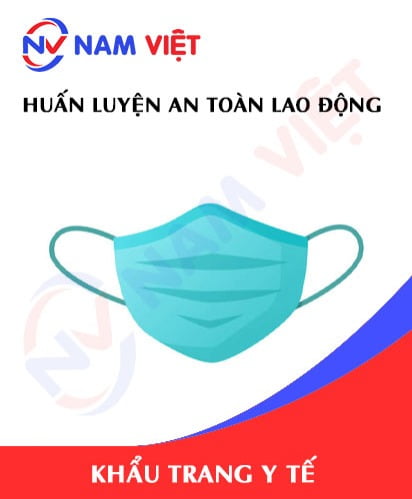
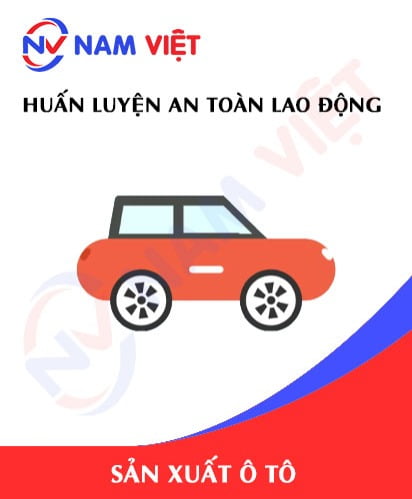

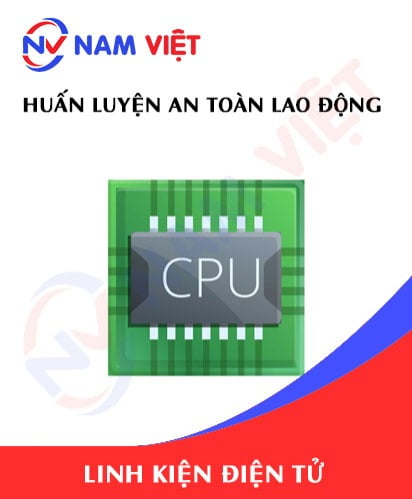
Review Occupational safety training for roller skate manufacturing.
There are no reviews yet.